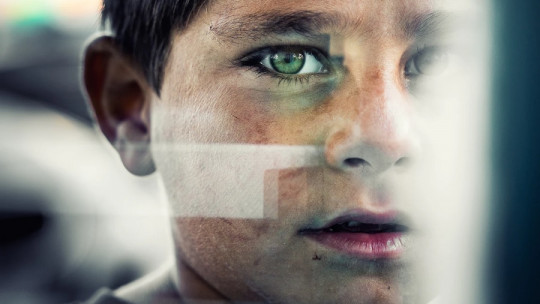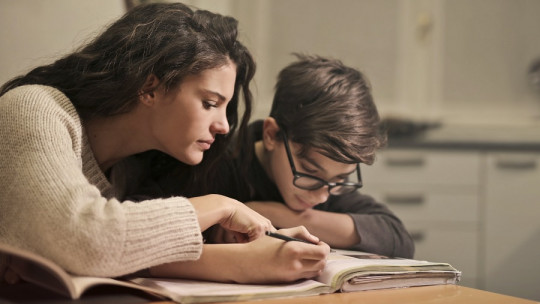
Many times parents try all kinds of tactics to get their children to maintain appropriate behaviors.
However, many of them are not usually satisfactory since they do not generate the behavioral change that we seek in the long term. Let’s learn the overcorrection technique a behavior modification resource with a lot of potential to achieve this goal, with the subsequent joy of parents.
What is the overcorrection technique?
The overcorrection technique is a tool for behavior modification, especially used in children It is based on the establishment of consequences for a certain behavior that have to do with it.
That is, if the child in question has stained a piece of furniture with his paint, a valid consequence according to this technique would be having to clean both that piece of furniture and all the pieces in the room.
Hence the overcorrection, since you are not only asked to correct the situation you have generated, but you must overcorrect it, extending its behavior to other related elements The objective is to generate a series of consequences that are not harmful to the child, but that are not something that is desirable either.
It is a punishment, therefore, in the sense of the word corresponding to the technique of operant conditioning. In this context, punishment would be any element that causes a decrease in the repetition of a certain behavior, and it is exactly what the overcorrection technique would be looking for.
This technique would never use any punishment that would result in a threat to the child’s integrity, either psychologically or physically, which would not be justified in any case, neither for this nor for any other behavior modification technique. Not only that, but the punishment must be related in some way to the behavior that is sought to be eliminated.
Therefore, noor would it be of no use, according to the technique of overcorrection, to punish by taking away the toys of that child who has defaced the furniture?, since they are two totally independent situations and it is difficult to establish a relationship between both events. On the other hand, by asking him to clean that painting and also extending the punishment to cleaning other elements, we are showing him the obvious relationship between his behavior and its consequence.
Furthermore, by using this type of punishment to seek to reduce behavior, parents can rest assured that they are not generating emotional negativity in the child, and that no aggressive behavior towards them will be perceived.
How to use it?
Although we have already mentioned some examples, We are going to break down in detail the different ways we have to apply the overcorrection technique depending on the behavior we want to eliminate or according to our needs or the possibilities we have at that moment.
In this way, we can find mainly two ways of proceeding to be able to practice this technique. They would be the following.
1. Restitutive overcorrection technique
The first modality of the overcorrection technique is the one that seeks the restitution of the damage generated by the misconduct The example that we saw in the first point about a child who uses his paints on a piece of furniture and consequently his parents impose on him as a punishment to clean, not only said piece of furniture, but many other elements of the room, would be a good example of this type. .
In this way, the infant will learn what he has done wrong and what is the way to repair it, going much further, since the restitution is being exaggerated on purpose, so that it serves as an effective punishment, that is, to reduce the probability that the child will repeat behavior similar to the one that brought them there.
That is to say, there is a double function: firstly, it gets the child to repair the situation, in this case, by cleaning the paint stains that he had generated. But also, by extending this behavior to many other elements, the child is put before a punishment that has an obvious connection with what happened but that also extends the consequences, to ensure that it is not repeated again.
2. Overcorrection technique through positive practice
But The situation does not always lend itself to direct restitution, or the conduct simply has not caused damage or damage, but it must still be replaced by another In that case, an appropriate punishment may be the constant repetition of the behavior that we want to establish, in an exaggerated way.
An example could be a child who finishes having a snack and, instead of putting the plate in the dishwasher or sink, leaves it on the table. In this case, an overcorrection technique could be asking you to place the plate in the dishwasher, then take it out again and leave it on the table, put it back in the dishwasher, and so on for a number of repetitions around ten. .
The objective is to provoke in the child a connection between the inappropriate behavior he had and the punishment he was forced to carry out, this being uncomfortable for him but without undermining in the slightest their psychophysical integrity
Usefulness of this technique in the education of boys and girls
Many readers with children may be wondering in what types of situations the overcorrection technique is useful. The reality is that it is a versatile technique that can be used against a variety of incorrect behaviors on the part of the child. We can use it to eradicate undesirable behaviors, bad habits and even aggressive behaviors.
Once the behavior we wish to correct is discovered, the punishment will be immediately established, which we have already seen must be directly related to said behavior. What is being intended is for the child to extinguish that behavior and at the same time repeatedly practice the new one that we propose as a replacement for the previous one.
Of course, resistance may appear, since the activity proposed as punishment is not something appealing to the child, so it is easy for tantrums, tears and other reactions to appear with which he will try to show his displeasure and even manage to escape from the scene. But the role of the father and mother must be firm, making him see that he must comply with the punishment as a consequence.
The adult can and should make him see that he perfectly understands how he feels and will be with him to support him, but that will not mean that the child can escape punishment. For the overcorrection technique to be effective, you must be persistent in applying the repair. If the precedent is set that with certain resistance the child can “get away” from repaying the damage, they will know that there is always an escape and we will have failed.
A good method is to guide the child, calmly, in the task he must perform, showing him how it is done. Thus, the adult will be able to act as a model and thus give him the example he needs to prove that there is nothing wrong with what he should do, but that it is necessary for him to do it so that everything is correct. It makes him see that he is practicing correct conduct.
Therefore, if the child relapses into an unwanted behavior, you can tell him, calmly, that it seems that he lacks practice in good behavior, and therefore he will have to do an exercise with which he will continue learning how to behave. must act. This is where punishment is introduced, in the form of restorative activity, repetitive or extended, as we have already seen, depending on the modality we have decided to use in this case.
In this way, with a simple proposal, maintaining calm and without causing any harm to the child, which is essential when applying correction techniques, We will be able to replace inappropriate behaviors with correct ones, which will be the ones that will be recorded in the minor as appropriate behaviors
In summary, we can conclude that the overcorrection technique is a very powerful mechanism to educate children in good behavior, both for the effectiveness it demonstrates and for the way it is approached with the children themselves, who will not feel attacked in no sense, no matter how much at a given moment they dislike performing the imposed task, which of course will not be as fun as the one that caused the situation.








